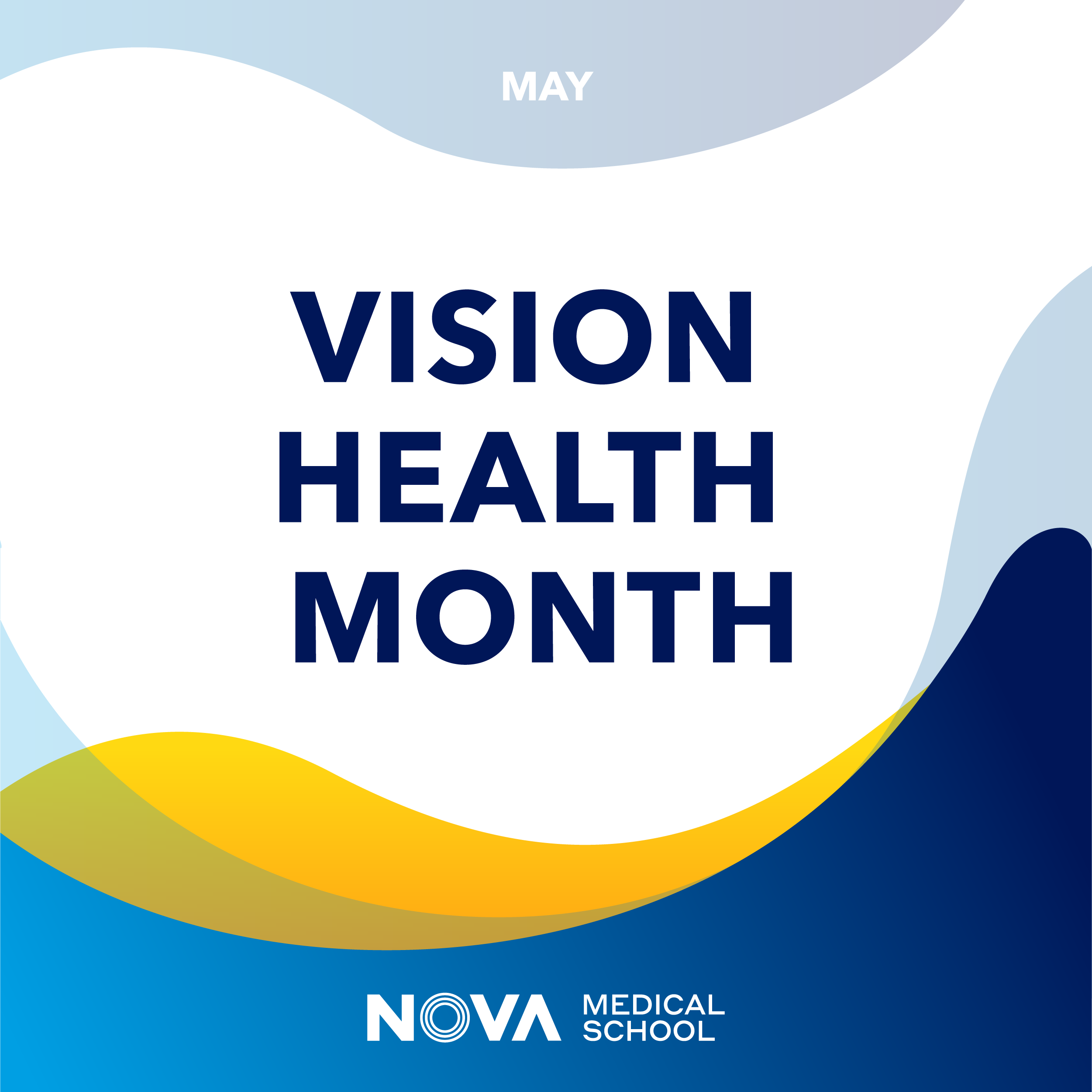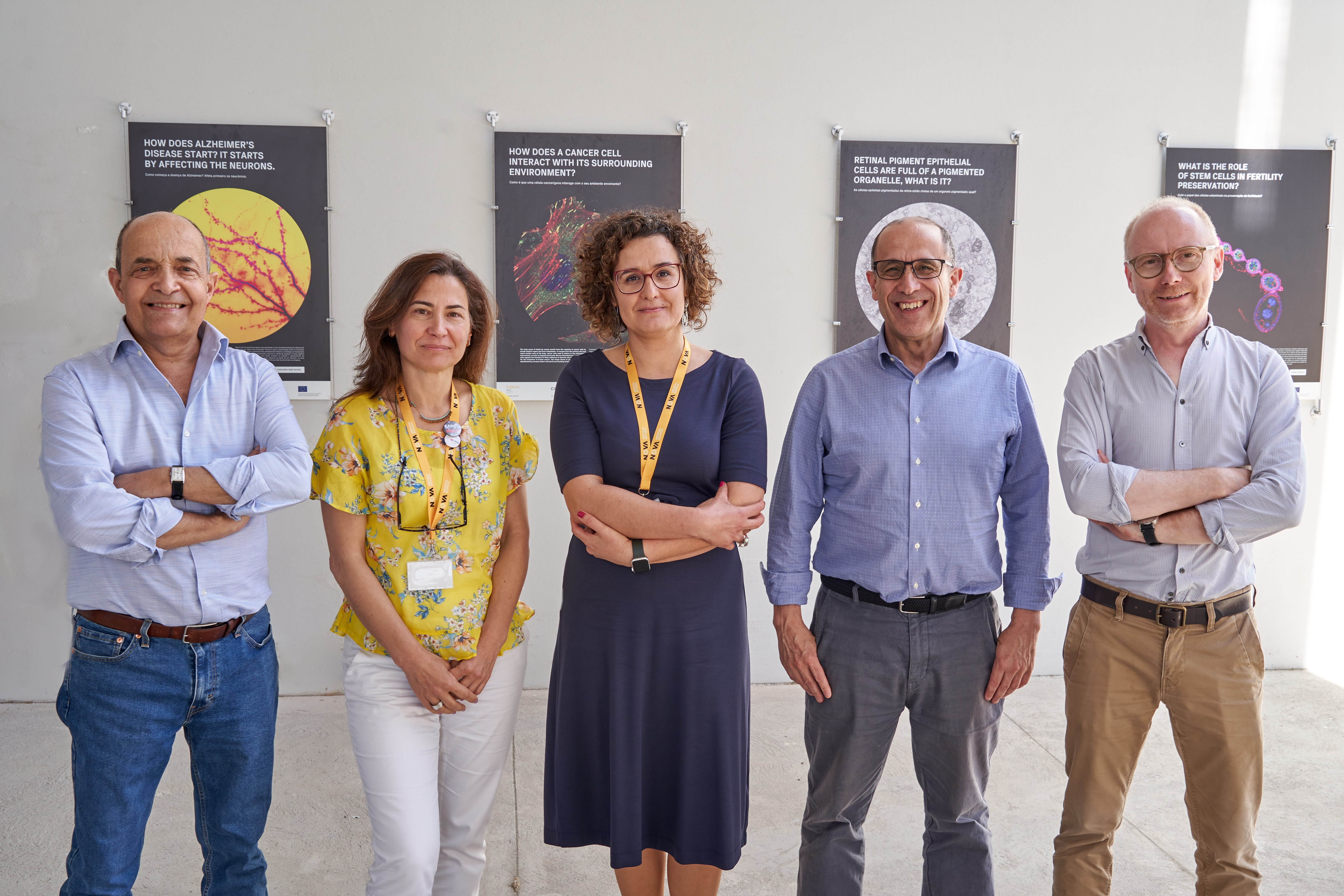
Vision loss is considered one of the conditions with the greatest impact on the quality of life of populations. The World Health Organization estimates that 253 million people are affected by some type of disease that compromises vision and that 81% of these are over 50 years old. In addition, 84% of those affected suffer from chronic eye diseases for which there are still no effective treatments.
At NOVA Medical School, there are five research groups that are dedicated to the study of various chronic and genetic diseases that affect vision.
The group led by Miguel Seabra is dedicated to the study of the molecular mechanisms underlying Age-related Macular Degeneration (AMD). This is a chronic disease that affects 15% of the population between 65 and 74 years old, 25% of the population between 75 and 84 years old, and 30% of the population over 85 years old. Currently, there is no treatment that prevents the progression of AMD in its more severe forms. Therefore, AMD has a higher prevalence than all dementias combined. In close collaboration with ophthalmologists, this research group seeks to develop new strategies for the treatment of early forms of AMD.
The group led by Sandra Tenreiro has been dedicated to the development of new models for the study of retinal diseases in the laboratory. In particular, the use of retinal organoids, three-dimensional cellular structures that mimic human tissue, to dissect the early stages of Diabetic Retinopathy. This is a disease that affects one third of diabetic patients and is the main cause of blindness in the adult population of working age. The aim of this research group is to use these novel models to identify new molecules that protect the retina in the context of diabetes.
The group led by Gabriela Silva intends to develop new therapies for diseases of the retina, not only in particular for Diabetic Retinopathy, but also for other diseases with a genetic cause. These new therapies are based on gene therapy, in this case using non-viral vectors, that are alternatives to insert genes into diseased cells that do not use viruses. The goal of this research team is to optimize the delivery and expression of genes of interest using more efficient systems and combinatorial approaches to target therapeutic vectors to specific cells.
The group led by António Jacinto studies animal models that can recover vision after significant eye damage. The most used model is the zebrafish, in which the retina regenerates after destruction of the photoreceptors, an integral part of the eye, for example due to physical damage or exposure to very intense UV levels. In the zebrafish retina there is a particular type of cells, the Müller Glia, which are activated after tissue damage and multiply to give rise to new photoreceptors and restore vision. In human retinas the Müller Glia cells also exist, but they cannot contribute to regeneration. A deeper understanding of the regenerative processes of zebrafish could help, in the future, to develop some regenerative capacity in humans, for example through the activation and regulation of human Müller Glia cells.
The group led by Paulo Pereira seeks to understand how communication between retinal cells can contribute to maintaining the function of this organ and how changes that occur during aging can compromise this communication, resulting in diseases with AMD. This group is especially interested in understanding how communication mediated by small extracellular vesicles, called exosomes, can contribute to maintaining retinal function preventing the development of diseases. This team of researchers is also developing strategies to engineer these exosomes so that they can transport proteins or other molecules with therapeutic potential that can be used to treat or prevent the progression of retinal diseases that cause vision loss.

From left to right: Principal Researchers Miguel Seabra, Sandra Tenreiro, Gabriela Silva, António Jacinto and Paulo Pereira.
The consequences of total or partial loss of vision are immense and include social exclusion, increased risk for falls and accidents, in addition to compromising mental health. Morover, aging, genetic factors and environmental factors are the main risk factors for the development of chronic eye diseases. Thus, in this Healthy Vision Month, this team of Researchers urge you to take care of your vision as we share the excellent research that is carried out at NMS in this field.